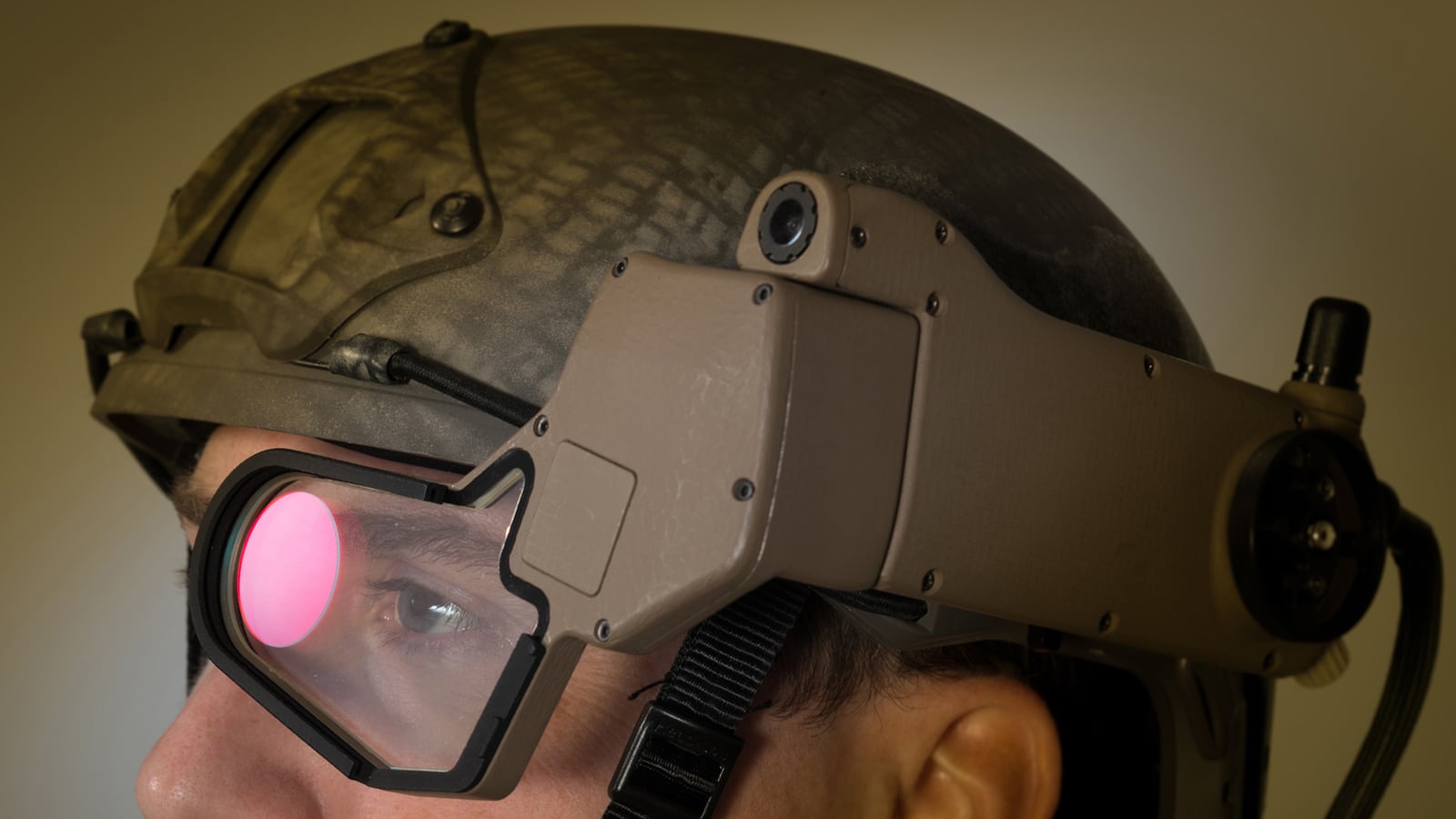Augmented reality has been a staple of science fiction since the dawn of computing. From Terminator to Iron Man to Total Recall, goggles and robotic faceplates that allow information to be overlaid on the physical world have provided a major advantage for whoever possessed them—good or evil. Now, the prospect that we’ll all have access to AR tech in the future is looking better than ever as military technology bleeds into everyday life.

For the past six years, the scientists at Applied Research Associates (ARA) have been working with the Defense Advanced Research Projects Agency (DARPA) to develop an augmented reality system called ARC4. Imagine the name of your bartender, the height of the building in the distance, the location of your car, all floating right before your eyes. They’re finally getting ready to bring ARC4 to the rest of the world, but what will it take for a piece of software designed for soldiers to make the transition to the sidewalk?
ARC4 isn’t a pair of sci-fi glasses; in fact, it’s not a hardware system at all. Rather, it’s is a software system that accepts inputs from a sensor module made of cameras, satellite information, and head tracking technology, and fuses it all into a display that can be overlaid onto someone’s field of vision. Functionally, the end product makes walking around look a lot like playing a first-person shooter game like Halo. In the military, it provides real-time information to soldiers about their environments, even if their vision is obstructed. The system can even show them people and objects around corners and behind hills to prepare users as they move through a battlefield.
There are several commercial augmented reality projects that have been in the works for years, from Google Glass to holographic goggles. What the ARA team thinks it has done better than the rest. though, is create something that can keep up with a person’s field of view in real time.
“When you move your head you want those icons to be very in-tune with your head motions,” says Dave Roberts, the Military Operations and Sensing Systems leader at ARA. If the lag between a user’s head movements and the layer of information overlaid on their vision is too long, the system becomes difficult to use—imagine turning your head and the icon that labeled a building didn’t update until a few seconds later, leaving a building icon floating in the middle of a field.
What ARC4 now needs in order to enter the commercial world is to be coupled with a hardware system that has all those sensor elements. In a military setting, ARA has used hardware like BAE System’s Q-Warrior display—a large, expensive device that fits in on the battlefield but never takes off in a store. But the ARC4 systems don’t have to be installed on huge devices, says Allan York, ARA’s senior vice president. “Essentially, in a package the size of a sugar cube, you can have the sensing components necessary.”
But finding hardware like that is tricky. Jenn Carter, senior scientist at ARA, says that there aren’t a ton of options for integrating the ARC4 into something that’s easy to wear. “Hardware needs to catch up with what we’ve done,” she’s said.
Paul Travers, CEO and founder of Vuzix, a hardware company that’s developed displays with DARPA, said he’s been impressed with ARC4’s capacity for real-time processing, but cautions that if it wants to live off the battlefield, its creators can’t be too picky. “The software and the hardware aren’t really being made by many companies. If there’s a piece of hardware that does the job, there’s not really a choice—you have to try to use it.”
This lack of options has both ends hungry to partner with one another. “I’m going to give the ARA folks a call when we get off the phone,” Travers joked. When asked about a particular hardware setup, York said, “If it’s another display mechanism, then we like it.”
This hardware question could be the key to ARC4’s non-military success. Unlike soldiers, who have to wear whatever their commanders tell them to whether it’s fashionable or not, customers and workers will simply take off devices that they don’t like. Travers says this has happened before: when workers in warehouses were asked to wear displays that they felt weren’t actually helping them, they simply removed them and left state-of-the-art devices sitting on the shelves all day because they were making their jobs more cumbersome.
Realistically, nobody expects a system like ARC4 to jump straight from the battlefield to the nearest Best Buy. Currently, the team is working to understand which problems augmented reality can solve by using situational information. Some of the most obvious contenders are emergency workers, firefighters and construction workers. “It’s great for coordination of rescue operations,” says Carter. “You can see where people are even if your view is obstructed.”
The ARC4 team does have their sights set on a broader, product targeted at the average consumer eventually. “Tweets, messages, people tagging information, you’d be able to see all that information overlaid in your real world,” said Carter.
And of course there’s the video game realm, where devices like the Oculus Rift are pushing the limits of virtual reality. “You could be an individual going to the paintball range and play by yourself,” says York. The system could generate your opponents and scatter them across the landscape waiting for you. Maybe someday, the ARC4 system could even turn your walk to work into a game of Halo.
These kinds of options are endless, Roberts says, at least on their end. “It’s software, you can do anything.”






